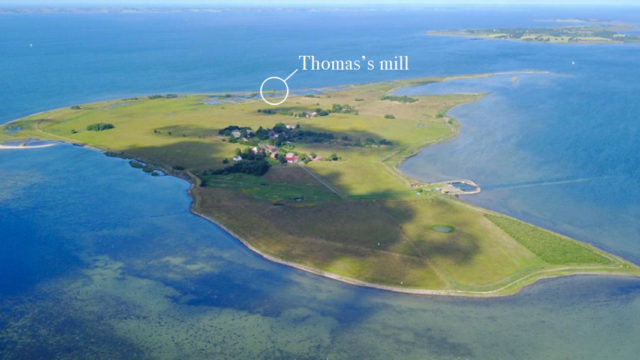The reason Denmark shows up in two of my novels is that I have a friend there, whom I first met thirty-nine years ago in Greece. I had been cycling solo for nine months, and he was cycling with his partner, and I shamelessly threw myself on the two of them because Christmas was three weeks away and I didn’t want to spend it alone. Ten years ago, when I was writing early notes for The Stone Loves the World, I consulted with this friend on Danish windmills, because I already knew that I wanted my character, Thomas, to be living in one. My friend knows a lot about Danish mills, because he knows a lot about pretty much every aspect of Danish culture and history. He showed me photographs and diagrams of various examples, and recommended that I visit a couple of refurbished mills in the vicinity of his home.
The mill that I fell in love with, however, was one I glimpsed from the deck of a ferry as it was passing the small island of Hjortø, off the southern coast of Funen. The mill was a dark shell without sails standing at the edge of the sea, separated from the rest of the island by a marsh. I could barely make it out in the gloomy rainy weather—it looked like a lighthouse pretending to be a mill, or a mill quixotically trying to behave like a lighthouse. The thing was tiny, but in its sepulchral lonesomeness it seemed grandly romantic.
